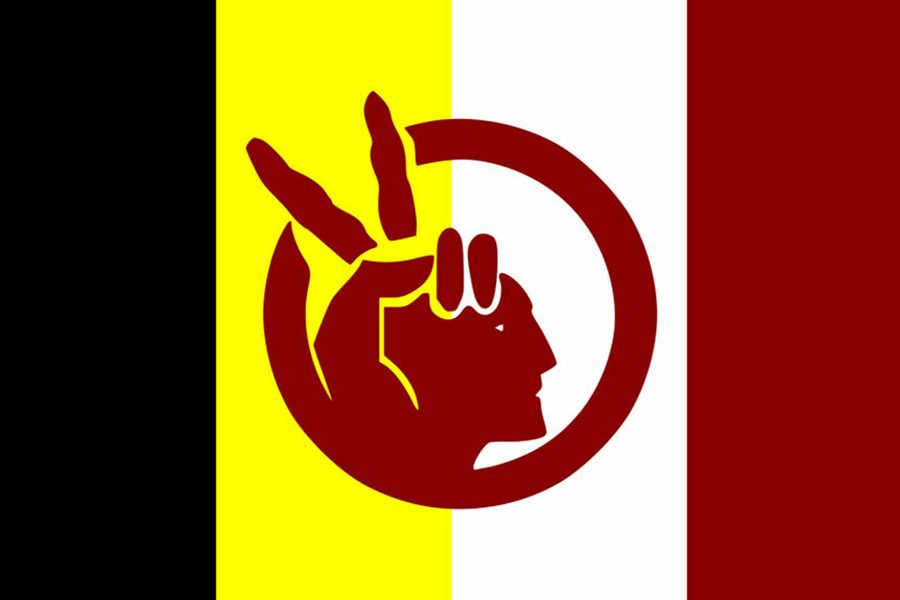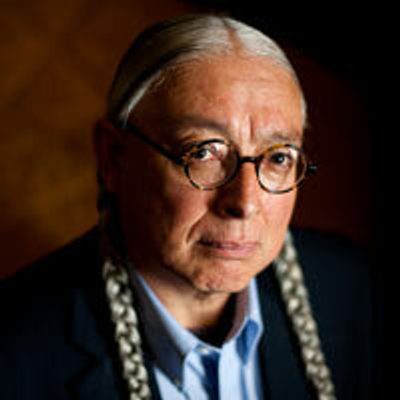Think Globally, Act Tribally
A UN declaration provides the framework for Native self-determination
Walter R. Echo-Hawk

The activism that has propelled the tribal sovereignty movement and the rise of modern Indian nations since 1950 is a social movement that ranks alongside the civil rights, women’s and environmental movements.
But much work remains before Native America can enter the body politic on a fair and equitable basis, with the full measure of its inalienable indigenous human rights intact. While the key for entering this realm was beyond the reach of the forbearers of the tribal sovereignty movement, today it lies in implementing the landmark United Nations Declaration on the Rights of Indigenous Peoples (UNDRIP) into the legal culture and social fabric of the United States. The United States formally endorsed the declaration in 2010, but has not discussed with Native American leaders how we should go about the task of implementing these UN standards, which are designed to protect the survival, dignity and well-being of indigenous peoples worldwide though a human rights framework in the post-colonial era.
The Great Spirit works in mysterious ways: Our fallen tribal leaders ushered us to the doorstep of self-determination, as that term is defined by modern international human rights law and applied to indigenous peoples in the UNDRIP. It is the paramount challenge of this generation to take up their mantle and enter into a human rights framework for defining Native American rights in the 21st century, preserving the best from existing law along the way and merging it with the UNDRIP to form a seamless, more just body of law.
During the Indian self-determination era of the 1950s through the 1970s, Native Hawaiians, American Indians and Alaska Natives collaborated on national issues affecting their interests. In the 1980s, Native Americans joined the international indigenous movement that took shape during the making of the UNDRIP. The United Nations began drafting the UNDRIP in 1985. By the time it was approved by the General Assembly in 2007, a large Native American contingent had joined the movement to demand human rights for tribal peoples around the world.
Yet despite impressive nation-building advances, Native America has not reached the Promised Land. Indigenous activism has failed to root out the engrained legacy of conquest — a legacy that fosters lingering inequities in a number of major problem areas, including the following three:
The political relationship between the United States and Indians fails to meet UNDRIP standards because of the federal government’s failure to recognize the self-determination rights of Native Hawaiians and Alaska Natives.
Until the United States takes the human rights duties prescribed by the UNDRIP to heart, deplorable Native American socioeconomic conditions, shocking gaps in physical and mental healthcare, and other indicators of societal trauma will remain permanent fixtures.
Native America will continue to be plagued by second-class land rights and no indigenous habitat rights until the UN standards regarding these rights are fully realized in the United States.
These problems bar the door to self-determination as defined by Article 3 of the UNDRIP, which states:
Indigenous peoples have the right to self-determination. By virtue of that right they freely determine their political status and freely pursue their economic, social and cultural development.
By contrast, U.S. law does not see Indian self-determination as an inherent human right. Instead, the Supreme Court has ruled that Congress may abolish tribal government outright.
Consequently, there is an urgent need to bring U.S. law into compliance with UNDRIP. Advocates must turn to modern international human rights law and take Native America beyond the existing framework into the human rights realm. We have come far, but Native Americans can only advance so far under an unjust legal regime. Without a stronger and more just human rights foundation, our dignity, survival and well-being remain at stake. Indigenous advocates must inform themselves about international human rights law, overcome inertia and set aside resources for a national campaign to implement the UNDRIP.
A good starting place is The Situation of Indigenous Peoples in the United States of America by S. James Anaya, the UN Special Rapporteur on the Rights of Indigenous Peoples. This 2012 UN report is a catalyst for change that points the way to the Promised Land:
Indigenous peoples in the United States … face significant challenges that are related to widespread historical wrongs and misguided government policies that today manifest themselves in various indicators of disadvantage and impediments to the exercise of their individual and collective rights.
The report expresses the need for a movement to resolve historical trauma in a national program of reconciliation. Unless we close the wounds, the report predicts, Native Americans will remain in an unstable position — subjected to conditions of disadvantage and inequity — and the moral standing of the United States will suffer.
Anaya’s report makes recommendations on how the three branches of the federal government can bring U.S. law and policy into compliance with UN human rights standards. It recommends that the president issue a directive to all executive agencies to adhere to the Declaration in all decision-making concerning indigenous peoples and asks the president to follow up on Congress’s 2009 apology to Native America with a program of reconciliation. The report identifies specific legislative reforms necessary to achieve national reconciliation, including a congressional resolution affirming UNDRIP as the policy of the United States. And the report asks U.S. federal courts to “interpret, or reinterpret, relevant doctrine, treaties and statutes in light of the declaration, both in regard to the nature of indigenous rights and the nature of federal power.”
If the changes required by these recommendations are implemented, America can redress its legacy of conquest and move beyond that painful past as a stronger, more just nation.
First, the hard-to-solve social ills and unhealed historical trauma found in tribal communities can be resolved in a human rights framework through the remedial measures prescribed by the UNDRIP.
Second, if the courts embrace and apply UN standards, the law pertaining to indigenous peoples will be reformed, strengthened and made more just.
Third, the vexing political question about the best way to incorporate indigenous peoples into the body politic can be answered: The belated nation-building steps called for by the UNDRIP are aimed at bringing Native Americans into the national community on a consensual, just and equitable basis, with their indigenous human rights intact.
Fourth, recognizing and protecting indigenous cultures, ways of life and habitats have a healthy environmental by-product: the development of a social ethic to guide the way that Americans look at the land (and the animals and plants that grow upon it) and sea (and all the life in the ocean). Our nation sorely needs an ethical foundation with broad consensus to address and solve the growing environmental crisis, but it has been unable to find such an ethic. Traditional Native American religions and the value systems that emerge from their hunting, fishing and gathering cosmologies provide necessary ingredients for this moral compass. This wisdom shows humans how to comport themselves to the natural world. There is a congruity between protecting the surviving cultures of the natural world and protecting the natural world itself.
Today, tribal peoples in the United States are studying the UNDRIP and evaluating its possibilities, but they have not yet mounted a focused national movement to implement the declaration. The UNDRIP serves as the basis for a new human rights era in federal Indian law and policy. We stand at the beginning of this era.
Reprinted and condensed with permission from Rosa Luxemburg Stiftung — New York Office, www.rosalux-nyc.org.






